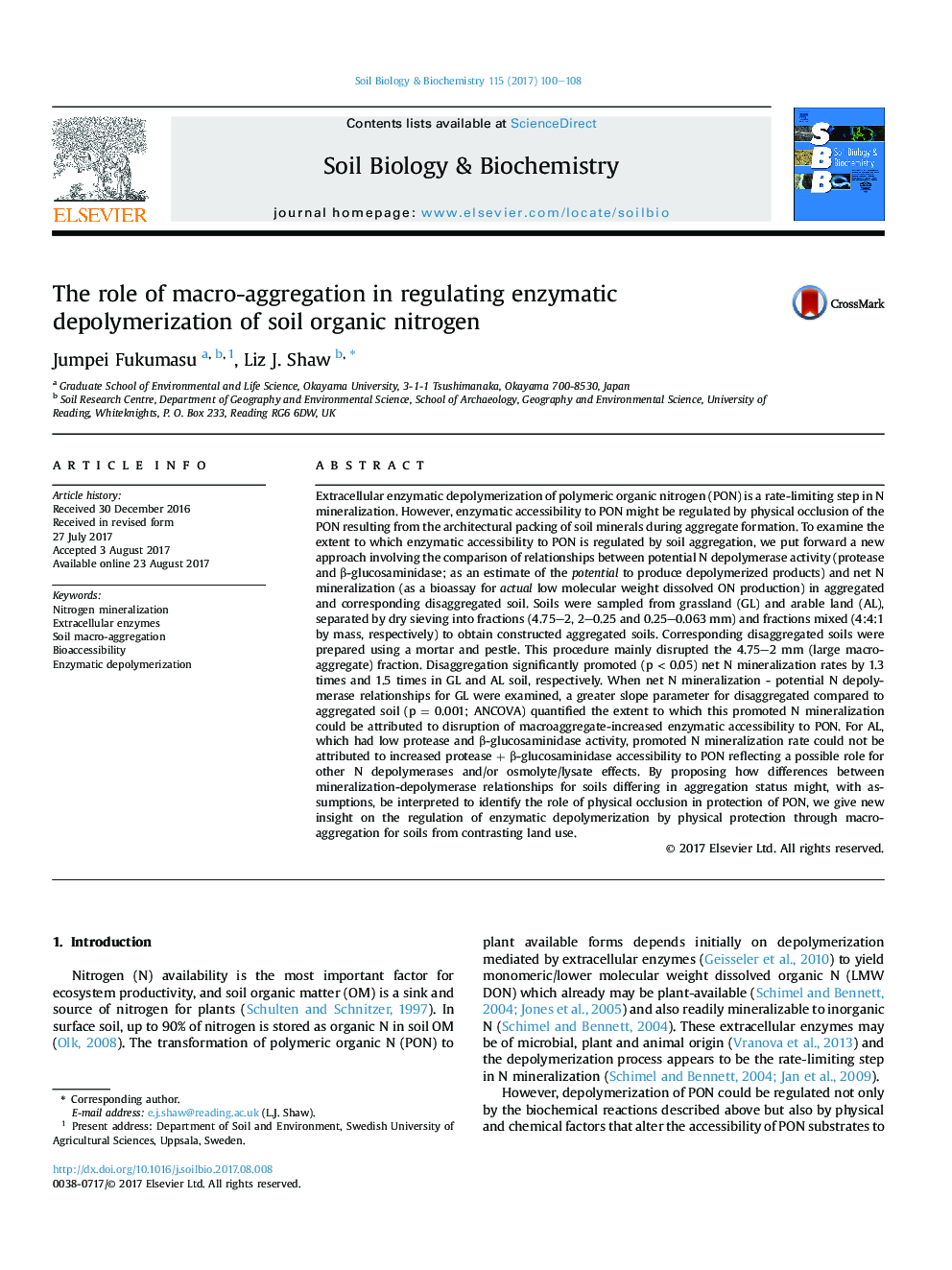| Article ID | Journal | Published Year | Pages | File Type |
|---|---|---|---|---|
| 5516230 | Soil Biology and Biochemistry | 2017 | 9 Pages |
â¢Aggregation protection of polymeric organic N (PON) from enzyme attack explored.â¢Dis-macroaggregation significantly increased net anaerobic N mineralization rate (Nmin).â¢PON depolymerase-Nmin relationships distinguish mechanisms responsible.â¢Role of disaggregation-increased accessibility of substrate to enzymes revealed.â¢Factors promoting net Nmin on disaggregation may differ with land use.
Extracellular enzymatic depolymerization of polymeric organic nitrogen (PON) is a rate-limiting step in N mineralization. However, enzymatic accessibility to PON might be regulated by physical occlusion of the PON resulting from the architectural packing of soil minerals during aggregate formation. To examine the extent to which enzymatic accessibility to PON is regulated by soil aggregation, we put forward a new approach involving the comparison of relationships between potential N depolymerase activity (protease and β-glucosaminidase; as an estimate of the potential to produce depolymerized products) and net N mineralization (as a bioassay for actual low molecular weight dissolved ON production) in aggregated and corresponding disaggregated soil. Soils were sampled from grassland (GL) and arable land (AL), separated by dry sieving into fractions (4.75-2, 2-0.25 and 0.25-0.063 mm) and fractions mixed (4:4:1 by mass, respectively) to obtain constructed aggregated soils. Corresponding disaggregated soils were prepared using a mortar and pestle. This procedure mainly disrupted the 4.75-2 mm (large macro-aggregate) fraction. Disaggregation significantly promoted (p < 0.05) net N mineralization rates by 1.3 times and 1.5 times in GL and AL soil, respectively. When net N mineralization - potential N depolymerase relationships for GL were examined, a greater slope parameter for disaggregated compared to aggregated soil (p = 0.001; ANCOVA) quantified the extent to which this promoted N mineralization could be attributed to disruption of macroaggregate-increased enzymatic accessibility to PON. For AL, which had low protease and β-glucosaminidase activity, promoted N mineralization rate could not be attributed to increased protease + β-glucosaminidase accessibility to PON reflecting a possible role for other N depolymerases and/or osmolyte/lysate effects. By proposing how differences between mineralization-depolymerase relationships for soils differing in aggregation status might, with assumptions, be interpreted to identify the role of physical occlusion in protection of PON, we give new insight on the regulation of enzymatic depolymerization by physical protection through macro-aggregation for soils from contrasting land use.
Graphical abstractDownload high-res image (212KB)Download full-size image
